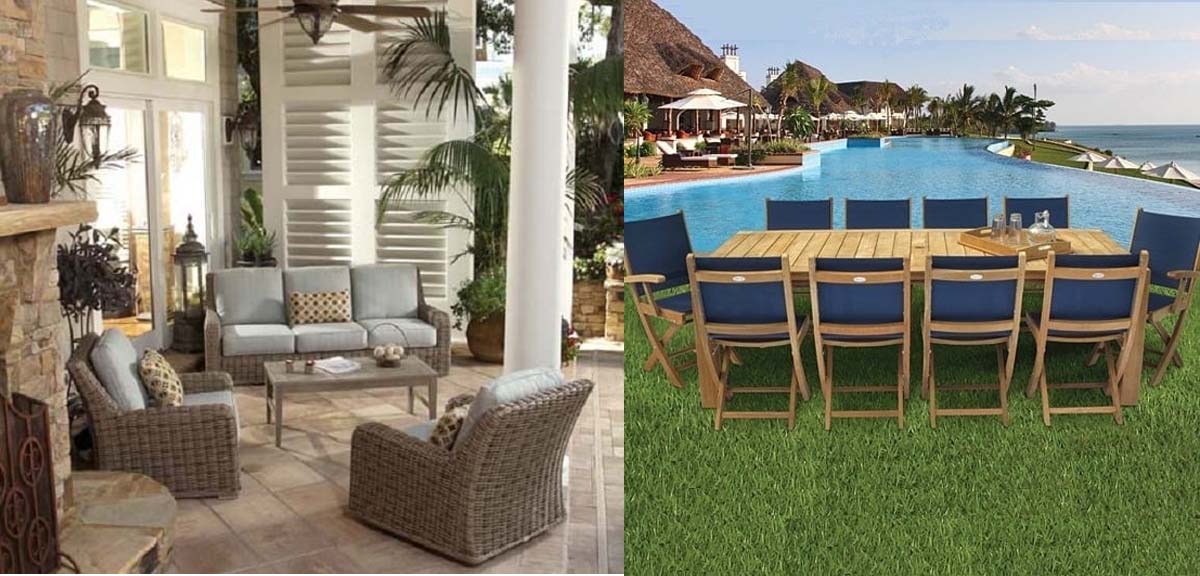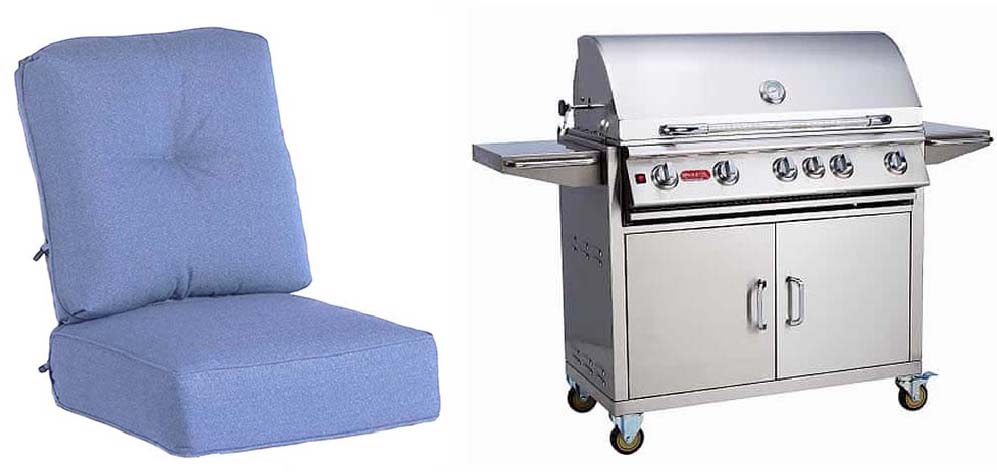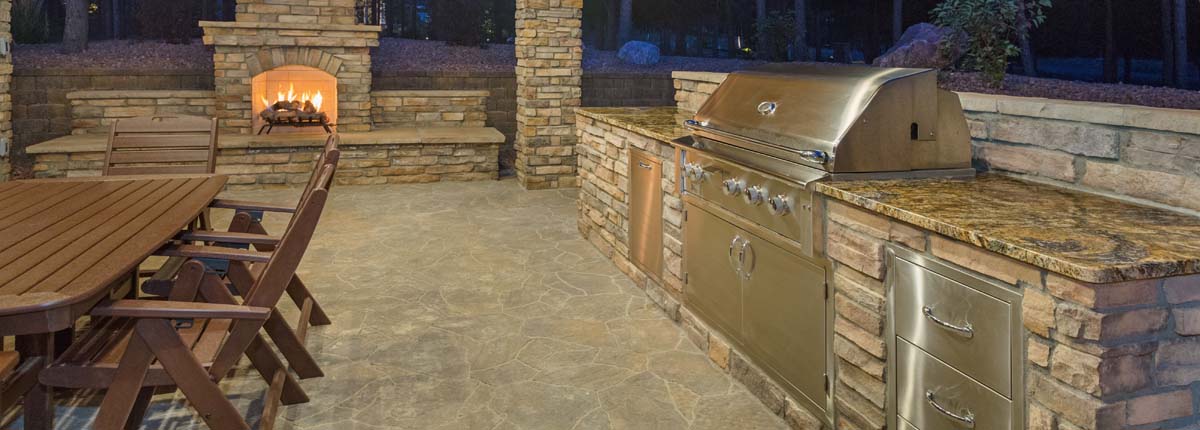Hunkering Down For Winter
Protecting Your Outdoor Investments - I was out feeding the birds this morning, taking note of all the falling leaves, the dying foliage, the nip in the air, and the sad state of my patio furniture. It was practically begging me to clean it up and store it away for the winter. I'm not quite ready for that, but the time is most definitely drawing near. A few more cook-outs, a few more bonfires, a few more s'mores and it will be time to hunker down and ride out the winter. On the upside, its hot tub season!
Here are some suggestions for getting your patio furniture and other outdoor equipment ready for winter. (For more specific instructions, check with manufacturers).
PATIO FURNITURE

Today's patio furniture is generally well-made and won't fall apart if you leave it to brave the elements. However, just like the finish on your car, your patio furniture will last longer and look better if you give it a little TLC.
Aluminum - aluminum patio furniture is usually powder-coated, which puts you a step ahead; it is designed to withstand whatever mother nature throws at it.
1. Wipe it with a dry cloth to remove dirt, pollen, spider-webs, etc.
2. Wash it with mild dish soap and warm water and make sure that it dries completely.
3. Touch up any scratches with matching paint; many manufacturer's make touch up paint available; check with your local retailer.
4. Apply a thin coating of automotive wax to preserve the finish.
5. When the furniture is completely dry, cover and store.
Wrought Iron/Steel - wrought iron and steel are susceptible to rust, so you want to take special care with them over the winter months.
1. Wipe it with a dry cloth to remove dirt, pollen, spider-webs, etc.
2. Wash it with mild dish soap and warm water and make sure that it dries completely.
3. Check for erosion and rust. Treat by removing rust with a wire brush or steel wool and touch up with rust resistant paint. Dry completely.
4. For extra protection you can treat the metal with a silicone coating.
5. When the furniture is completely dry, cover and store.
Plastic - plastic is easy to clean and care for; hose it down, dry it and store it. Because plastic can be brittle, it is best to store indoors during the cold winter weather.
Vinyl/HDPE - most synthetic wicker furniture is vinyl or high density polyurethane.
1. Wipe it with a dry cloth to remove dirt, pollen, spider-webs, etc. Use a vacuum to get into cracks and crevices of the weave.
2. Wash it with mild dish soap and warm water; use a soft bristle brush for stubborn dirt.
3. Allow to dry completely; cover and store.
Teak - teak is valued for its resiliency, but it still needs some TLC. It's not necessary to store it indoors, in fact, you don't want it in a heated area because the wood can dry out.
1. Wipe it with a dry cloth to remove dirt, pollen, spider-webs, etc.
2. Apply teak oil if you want to maintain golden color.
3. If you choose to cover teak, make sure the cover is breathable.

Rattan/Natural Wicker - natural wicker requires some extra care to maintain its beauty and usability.
1. Wipe it with a dry cloth to remove dirt, pollen, spider-webs, etc. Use a vacuum to get into cracks and crevices of the weave.
2. Wash it with mild dish soap and warm water or a mixture of wood soap and warm water; use a soft bristle brush for stubborn dirt.
3. Allow to dry completely; apply a thin coating of paste wax or lemon oil.
4. Cover and store.
Fabrics - check with your manufacturer for specific cleaning instructions; synthetic fabrics are cleaned and stored differently than natural fabrics
Sling and Solution-Dyed Acrylic Fabrics (i.e. Sunbrella)
1. Wash with mild soap and warm water; add a solution of 1 part bleach/10 parts water to take care of mildew. If fabrics are removable, they can be washed on gentle cycle.
2. Allow to air dry completely; store indoors in a plastic tote or cushion storage bag to prevent mold and insects. .
Mosaic/Stone Top Patio Tables should be stored indoors over the winter to prevent tiles from loosening from freezing/thawing.
Ideally, if you are storing your furniture outdoors, opt for a deck or patio area or pallets; do not store directly on the ground.
Check Out Patio Furniture Covers Here
OUTDOOR PLAY AREAS
If you have a sandbox, you should empty it completely and clean it out; if this isn't possible, make sure you cover it to keep out animals, insects and environmental debris. Swing sets and playground equipment should be thoroughly cleaned; remove leaves and debris to prevent mold and mildew. with mild soap and warm water. Sand off any lichen or moss that may be adhering to the wood to prevent damage.
GRILL
Even though you may plan to use your grill all year round, this is still a good time to clean up and season your equipment.
1. The outside of the grill can be washed with a warm, soapy cloth; apply a lightly lubricating oil like WD-40 to moving parts.
2. Apply a stainless steel polish to protect the outside of the grill.
3. The grill surface should be scrubbed and cleaned of any debris; use degreaser and a brush designed for the grill to remove any cooked on food.
4. Empty your grill of charcoal/wood.
5. Season cook surfaces by applying vegetable oil and allowing the grill to heat to 500 degrees for 20 minutes.
6. If you have a propane gas grill, disconnect the tank and store in a metal container outside of your home. If it is natural gas, turn off the gas line.
7. Once the grill is clean and dry, cover with a fitted grill cover and store in a dry area outside. Check Out Grill Covers Here 
OUTDOOR KITCHEN
Just like the grill, you may plan to use your outdoor kitchen year round. You will still need to ensure that your kitchen is ready for colder weather, even if you continue to use it.
1. Check your plumbing. If you have outdoor water lines, you should clear them off all moisture to avoid freezing and bursting. To clear your water lines, first shut off the water supply to the outdoor kitchen from inside the house to ensure that the entire outdoor line is cleared. Drain the lines; pay attention to outdoor refrigerators, ice makers, sinks and any other outdoor equipment that uses water. Compressed carbon dioxide can be used to clear water from lines. Make sure all drain valves are open all winter long.
2. Prepare your grill (see above)
3. Cover and/or Seal Surfaces. Clean surfaces completely. Wood cabinets and wood surfaces should be oiled. Stone countertops should be sealed with products designed specifically for this use. Stainless steel products can be treated with a coat of stainless steel finish.
4. Winterize fridge and ice maker. Switch off power. Empty storage bin, clean it and make sure the drain valve is closed. Empty fridge, clean it out with warm water and mild soap. Remove the grill from both machines and use a vacuum to clean behind them. Do not cover; moisture can accumulate under the cover and cause damage. For specific instructions, consult your manufacturer.
5. Clean and cover the sink.

Join the Discussion:
Comments
No posts found
